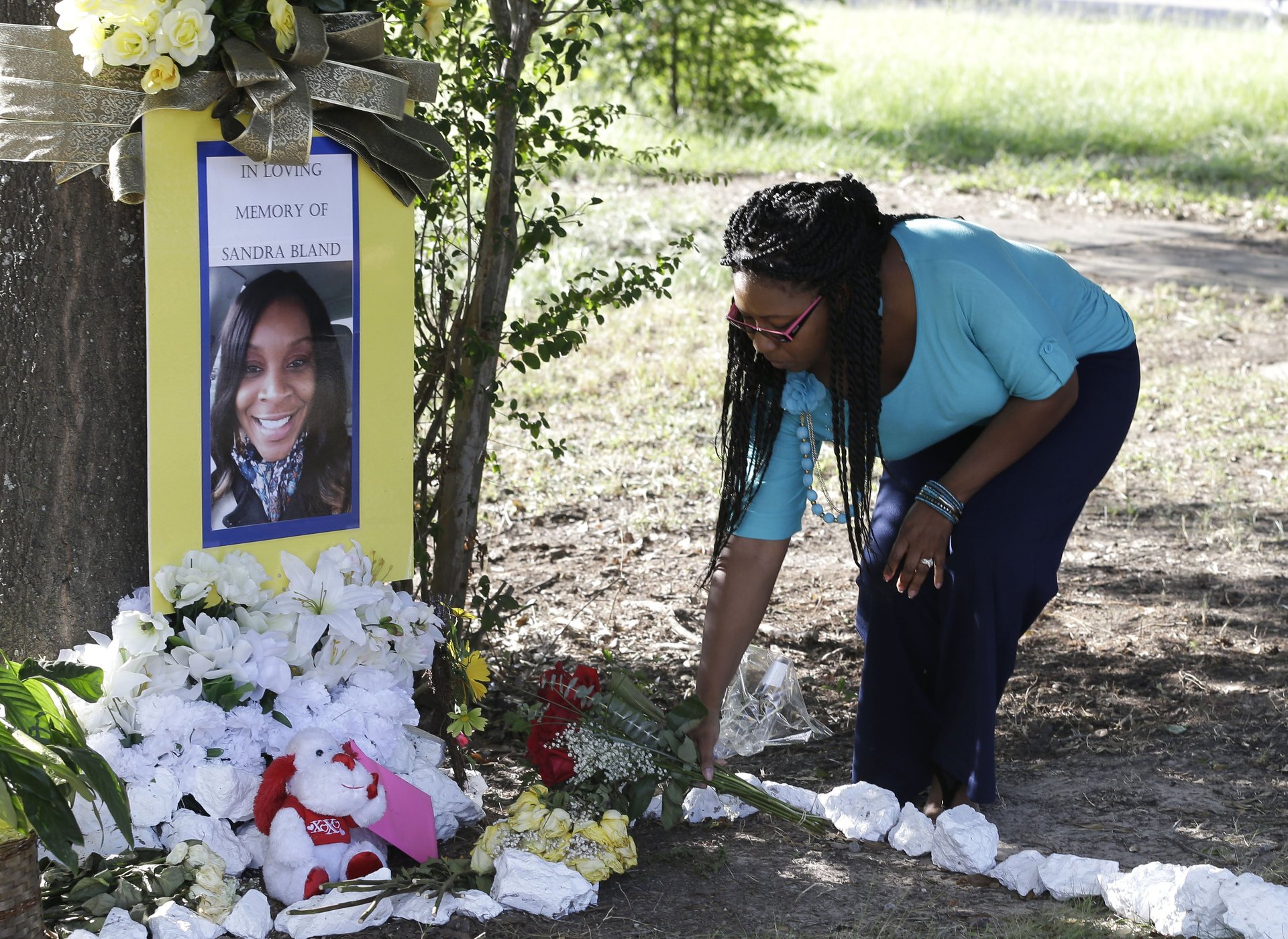It’s not just Sandra Bland: US jails drive thousands to suicide
The family of Sandra Bland, the woman who was found hanging dead in a Texas jail after she was detained during a traffic stop, has filed a wrongful death lawsuit contending that she should never have been arrested in the first place, and that she did not receive the appropriate attention while in her cell. Friends and activists have questioned whether Bland did indeed commit suicide, but if the official autopsy was indeed correct, she was not alone: according to new data released yesterday (Aug. 4), hundreds of people take their lives in US jails every year, making it the top cause of death for people in jail detention.


The family of Sandra Bland, the woman who was found hanging dead in a Texas jail after she was detained during a traffic stop, has filed a wrongful death lawsuit contending that she should never have been arrested in the first place, and that she did not receive the appropriate attention while in her cell. Friends and activists have questioned whether Bland did indeed commit suicide, but if the official autopsy was indeed correct, she was not alone: according to new data released yesterday (Aug. 4), hundreds of people take their lives in US jails every year, making it the top cause of death for people in jail detention.
Since 2000, 4,134 inmates have committed suicide in local jails, often shortly after being detained and usually before they were convicted of any crime, according to the US Bureau of Justice Statistics. Suicide has been the leading cause of death in US jails since 2000, and has been on the rise in recent years. (Illnesses overall cause more deaths than suicide, but no single disease caused more deaths than suicide.)
Sandra Bland’s case is not representative of the typical jailhouse suicide, which statistically is usually committed by white men. But her death would follow the pattern that inmates commit suicide very early on during their incarceration, according to a 2006 study from the National Center on Institutions and Alternatives.
Suicides in jails are three times as common as suicides in the broader US population—but they are also significantly more common than in state prisons, where inmates are serving often-lengthy sentences after being convicted of a crime.
Experts point to several reasons for why jail suicides are so frequent. Although jails have improved their screening protocols, they know much less about their inmates than prisons do, and are often unable to assess the risks. The jailhouse population is already among the most vulnerable to suicide–many have history of mental illness, drug abuse, they are socially disenfranchised or isolated. While in confinement, pulled out of their daily lives, they suddenly face a crisis situation.
They can experience a variety of stress factors, according to a study of jail suicides from the National Institute of Corrections (NIC): ”fear of the unknown, distrust of an authoritarian environment, perceived lack of control over the future, isolation from family and significant others, shame of incarceration, and perceived dehumanizing aspects of incarceration.”